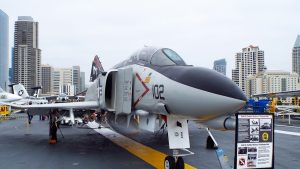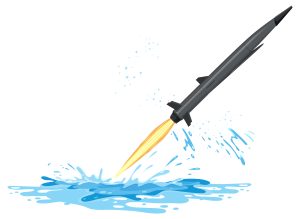Yet to figure out What Was The Main Reason The Soviets Place Missiles In Cuba? The main reason the Soviets placed missiles in Cuba was to gain strategic leverage and deterrence against perceived US nuclear threats, thereby balancing the military power dynamics of the Cold War.
he Cuban Missile Crisis of 1962 stands as one of the most pivotal moments of the Cold War, highlighting the intense geopolitical rivalry between the United States and the Soviet Union.
This article delves into the primary reasons behind the Soviet Union’s decision to deploy missiles in Cuba, examining the strategic, political, and military motivations that fueled this crisis.
What Was The Main Reason The Soviets Place Missiles In Cuba?
Historical Context
Cold War Tensions Between US and USSR
The Cold War, a period of ideological conflict and military tension between the Western bloc led by the United States and the Eastern bloc led by the Soviet Union, set the stage for the Cuban Missile Crisis. Both superpowers engaged in a relentless arms race and competed for global influence, often through proxy conflicts.
Cuban Revolution and Castro’s Alliance with Soviets
Following the Cuban Revolution in 1959, Fidel Castro established a socialist government and aligned closely with the Soviet Union. This strategic partnership provided the Soviets with a foothold in the Western Hemisphere, challenging US hegemony in its own backyard.
Soviet Strategic Goals
Strategic Military Advantage
The placement of missiles in Cuba was primarily aimed at tipping the military balance in favor of the Soviet Union. By stationing intermediate-range ballistic missiles (IRBMs) in Cuba, the Soviets sought to achieve parity with the United States in terms of nuclear capabilities. This move was strategic in nature, enhancing Soviet deterrence and defensive capabilities against potential US aggression.
Deterrence Against US Nuclear Threat
From the Soviet perspective, the deployment of missiles in Cuba served as a deterrent against what they perceived as US nuclear threats. The United States had previously stationed nuclear missiles in Turkey and Italy, posing a direct threat to Soviet territory. By placing missiles in Cuba, the Soviets aimed to create a similar deterrent effect and ensure their own security.
US Strategic Perspective
Discovery of Soviet Missiles in Cuba
In October 1962, US reconnaissance flights discovered Soviet missile installations in Cuba, triggering a tense standoff between the two superpowers. The revelation of these missiles posed an immediate threat to US national security, leading to a series of diplomatic and military responses.
Response and Escalation
The discovery of Soviet missiles in Cuba prompted the United States to consider various responses, including military action. President John F. Kennedy and his administration deliberated over the appropriate course of action, balancing the need to protect national security with the risk of escalating into nuclear conflict.
Political Motivations
Soviet Political Strategy During Cold War
Beyond military strategy, the Soviet Union pursued political objectives through the Cuban Missile Crisis. By challenging US dominance in the Western Hemisphere, the Soviets aimed to bolster their global prestige and influence. The crisis also served as a test of leadership for Soviet Premier Nikita Khrushchev, who sought to assert Soviet power while avoiding direct confrontation.
Impact on Global Alliances
The crisis had significant implications for global alliances and diplomacy. It strained relations between the United States and its NATO allies, who supported US efforts to resolve the crisis diplomatically. Meanwhile, non-aligned countries and developing nations watched closely as the superpowers navigated the brink of nuclear war.
Cuban-Soviet Relations
Castro’s Role and Motivations
Fidel Castro welcomed Soviet military assistance as a means to secure his revolutionary government against US-backed attempts at regime change. The Cuban leader saw the deployment of missiles as a necessary measure to defend Cuban sovereignty and deter further US intervention in Cuban affairs.
Cuban Perspective on Missile Deployment
For Cuba, the presence of Soviet missiles represented a form of protection against external aggression. The Cuban government viewed US hostility and the Bay of Pigs invasion as clear indications of Washington’s intent to overthrow Castro’s regime. The missiles were seen as a deterrent to future US interventions in Cuban affairs.
Military Strategy
Missile Capabilities and Range
The missiles deployed in Cuba included medium-range and intermediate-range ballistic missiles capable of reaching major US cities within minutes. This strategic placement gave the Soviets a significant advantage in terms of response time and operational flexibility in a potential conflict scenario.
Operational Deployment and Readiness
Soviet military personnel worked diligently to establish and maintain operational readiness of the missile sites in Cuba. This involved complex logistical efforts to transport and assemble missile components under strict secrecy, reflecting the high stakes and covert nature of Cold War rivalries.
Diplomatic Reactions
United Nations Involvement
The Cuban Missile Crisis was brought before the United Nations Security Council, where both the United States and the Soviet Union presented their respective positions. The UN played a crucial role in facilitating diplomatic negotiations and urging a peaceful resolution to the crisis.
Negotiations and Resolutions
Intense diplomatic negotiations ensued between US Secretary of State Dean Rusk and Soviet Ambassador to the UN Valerian Zorin, along with backchannel communications between Kennedy and Khrushchev. These efforts culminated in a series of agreements, including the removal of Soviet missiles from Cuba in exchange for US assurances not to invade the island nation.
Crisis Resolution
De-escalation Efforts
Through skillful diplomacy and strategic maneuvering, both the United States and the Soviet Union managed to de-escalate the crisis without resorting to military conflict. This period marked a critical moment in Cold War history, where rational decision-making and crisis management averted a catastrophic nuclear showdown.
Agreement and Aftermath
The resolution of the Cuban Missile Crisis included the dismantling and removal of Soviet missiles from Cuba under UN supervision. In return, the United States quietly removed its own missiles from Turkey and Italy. This compromise helped restore a fragile sense of peace while reshaping US-Soviet relations for years to come.
Historical Impact
Long-term Consequences for US-Soviet Relations
The Cuban Missile Crisis had profound and lasting effects on US-Soviet relations, prompting both nations to pursue arms control agreements and confidence-building measures. It also reinforced the concept of mutually assured destruction (MAD), whereby the possession of nuclear weapons by both superpowers deterred direct military conflict.
Lessons Learned from the Crisis
The crisis served as a sobering reminder of the dangers inherent in nuclear brinkmanship and the importance of diplomatic engagement in resolving international disputes. It influenced subsequent US foreign policy decisions and shaped global perceptions of nuclear proliferation and disarmament.
Expert Insights
Perspectives from Historians and Analysts
Historians and analysts continue to debate the motivations and consequences of the Cuban Missile Crisis. Some argue that the crisis was a pivotal moment that highlighted the dangers of nuclear escalation, while others emphasize its role in reshaping global power dynamics and strategies of deterrence.
Relevance of the Crisis in Contemporary Geopolitics
The Cuban Missile Crisis remains relevant in contemporary geopolitics as nations navigate complex security challenges and nuclear proliferation concerns. It serves as a case study for policymakers and scholars studying crisis management, conflict resolution, and international diplomacy.
What Was The Main Reason The Soviets Place Missiles In Cuba FAQs
- Why did the Soviets place missiles in Cuba?
- The Soviets deployed missiles in Cuba primarily to counterbalance the United States’ strategic advantage and deter potential US military intervention against Cuba.
- What specific missiles did the Soviets place in Cuba?
- The Soviets deployed medium-range and intermediate-range ballistic missiles (MRBMs and IRBMs) capable of reaching major cities in the United States.
- When did the Soviets deploy missiles in Cuba?
- The deployment of Soviet missiles in Cuba occurred in 1962, leading to the Cuban Missile Crisis, which was a critical moment in Cold War history.
- What was the reaction of the United States to the Soviet missile deployment in Cuba?
- The United States reacted with alarm and initiated a series of diplomatic and military actions, including a naval blockade of Cuba, to address the perceived threat.
- How did the Cuban government view the Soviet missile deployment?
- The Cuban government, led by Fidel Castro, welcomed the Soviet missile deployment as a means to deter US aggression and protect Cuban sovereignty.
- How was the Cuban Missile Crisis resolved?
- The crisis was resolved through intense diplomatic negotiations between the US and the Soviet Union, resulting in the removal of Soviet missiles from Cuba in exchange for US assurances not to invade Cuba.
- What were the long-term consequences of the Cuban Missile Crisis?
- The Cuban Missile Crisis had lasting implications for global security, influencing arms control efforts and reshaping US-Soviet relations during the Cold War era.
Conclusion
In conclusion, the main reason the Soviets placed missiles in Cuba during the Cuban Missile Crisis was to gain strategic leverage and deterrence against perceived US threats.

This move had far-reaching implications for global security and US-Soviet relations, ultimately reshaping Cold War dynamics and influencing future arms control efforts.